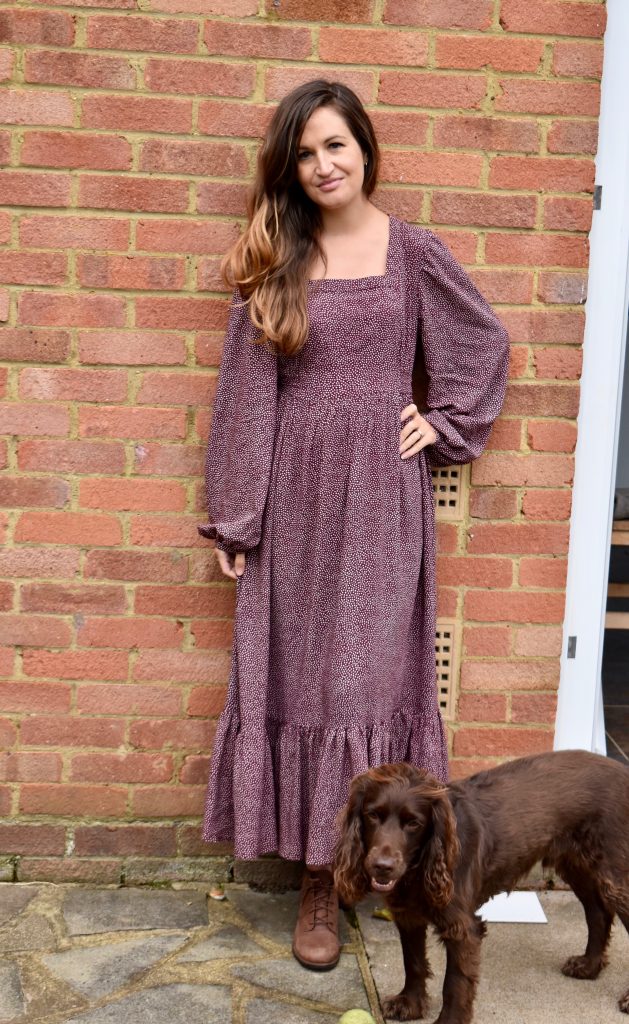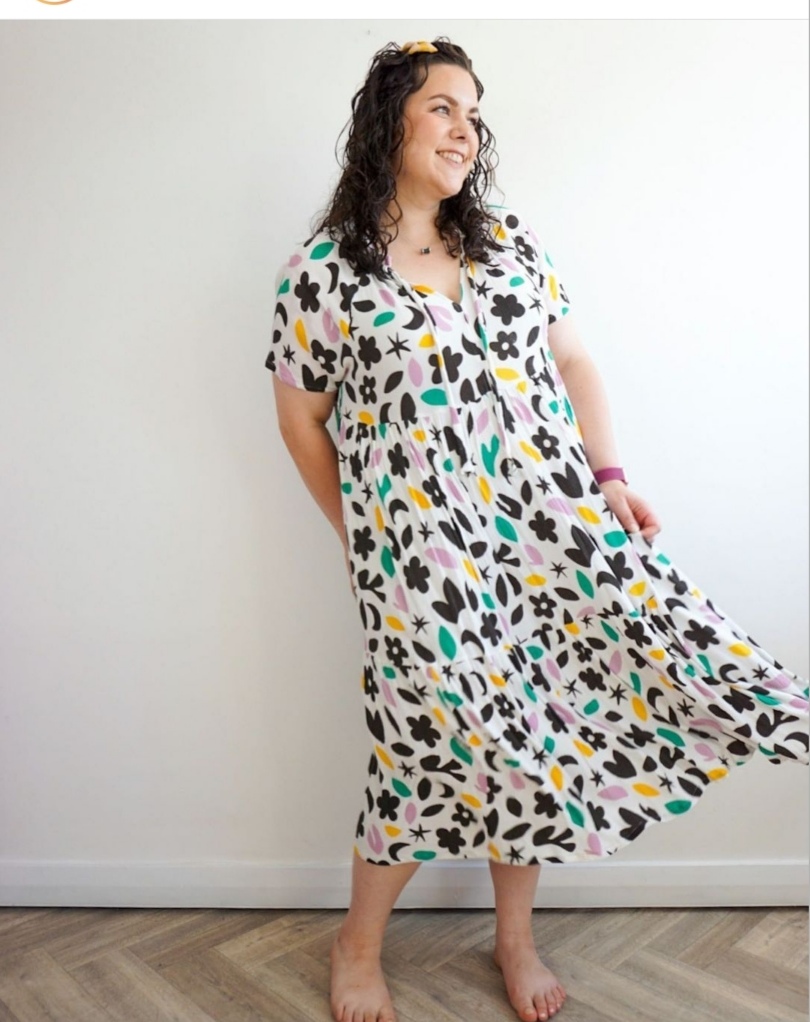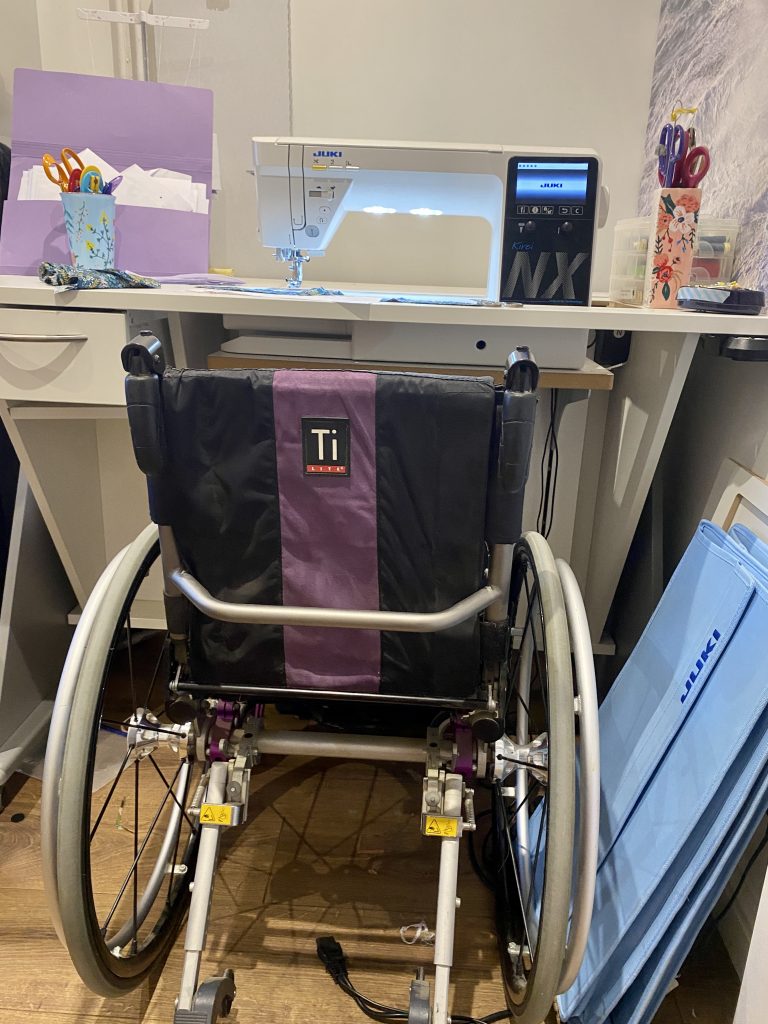
I’m a tea drinking, cake loving, disabled stay at home mum based in Bedfordshire. I went to university in London to study Law and unfortunately my career was de-railed early on by my medical condition, Osteogenesis Imperfecta. I started sewing in 2017 as a therapeutic outlet from life with a chronic condition. The irony is not lost on me that my disability can make sewing difficult or stop it in its tracks altogether!
My sewing space has changed over the years. Primarily, I try to ensure my workspace and tools are as ergonomic as space and cost will allow. I began on the dining room table and graduated to having my own dedicated space. Then during lockdown my space was invaded by my husband and two children working from home!
Talking about Accessibility
During this time, my lovely friend Samantha @purplesewingcloud started to shine a light on the accessibility (or otherwise) of various sewing machine manufacturers. It was through raising this dialogue that I had some really interesting and helpful conversations with Martha from Juki Club. It was important to me that any collaboration with a company was not a tick box exercise. We wanted to go beyond photos representing disabled sewists and look for ways to keep the conversation going.
To that end, we decided to create a space here on the Juki Club website for disabled sewists to tell their unique sewing stories. Because disability is so varied, no one person can speak for us all. We also felt it would be helpful to look at Juki sewing, quilting and overlocker machines in light of accessibility. Finally, we wanted to begin a list of helpful gadgets. We hope that we can help each other by sharing our various ways of working. We also recognize that non-disabled people can benefit from many of the techniques, methods and tools we use to sew.
Juki Ambassador
As part of the conversation, I will be contributing as an ambassador for Juki. I’ll share my experiences of using my Juki machine, as well as sharing other accessibility and disability issues. I’m delighted to be using the Juki NX7 computerised sewing machine. The NX7 encompasses some of the most up-to-date sewing technology. Despite all the bells and whistles, I’m finding the Juki NX7 incredibly intuitive and user friendly.
Later, I will dedicate a specific and detailed post to share my thoughts and findings as to how this model is helpful (or not) to the disabled sewist. However, after putting the NX7 through its paces with projects involving delicate silk and viscose as well as bulky flannels and twill, I can say that there are many helpful features which have improved my sewing experience by reducing the impact on my body.
Creating an ergonomic sewing space
After seeing that my work surface was less than ideal, Martha asked if I had room for an RMF sewing table. RMF make sewing furniture and Martha thought that I would benefit from an adjustable table so that I could vary the level of my work surface. After looking at the benefits of having one, my husband said, ‘we will find space!’ He knew how much I was struggling.
The lovely people at Franklins delivered it to my house, helped set it up, and demonstrated its functions. I cannot overstate the benefits of having this table. To begin with, it means I can now use my wheelchair as my sewing chair. This has been built and adjusted to my height so is the optimal seat for me. I can also raise the table to standing height at the press of a button for cutting, and use a perch stool if I need to change positions.
All together my sewing set-up is unrecognisable from 6 months ago. My new sewing machine and table combination allows me to stay at the machine for longer and experience less pain. All I need now is for everybody to get back to work and school so I can get my sewing space back!
We are so happy to have Marie on our Juki Club team! Marie lives in Bedfordshire with her husband and two children. Woody, the Cocker Spaniel never leaves her side and often makes a cameo appearance in her photos! She is predominantly a garment sewer, and tries to make sustainable choices where possible by creating clothes that will last, as well as re purposing unused items. Having a disability often requires her to work differently in order to make the most of her sewing time. She loves to share her ideas on Instagram @marie_stitchedup and blogging at marie-stitchedup.com.














I am interested in expanding or beginning a club here in the states. Could you help me? I recently read a couple articles related to experiences. I am actually learning disabled but amazing spatial skills that help me visualize what my end product should be but sometimes the sizing is not such right. I find sewing so relaxing but I am a perfectionist and I am having trouble just getting started. Thank you. Dawn
Hi Dawn, Martha here from Juki Club. There is something so satisfying about working with your hands to create something our of your head. I completely understand how perfectionism can get in the way. One of the phrases that help me is – Finished is better than perfect. I also try to do practice pieces where I give myself permission to make mistakes, because really, making mistakes is the only way we can learn something new. Maybe adding a practice piece stage to your process would help you to get going. Another disabled sewist that I find so fun and encouraging is Sam at @purplesewingcloud. Check her out on Instagram. :)Hope this helps, all the best and thanks for commenting! Martha x